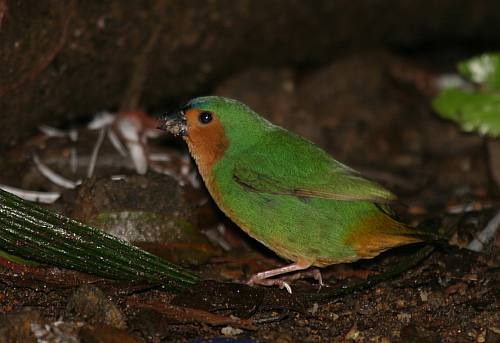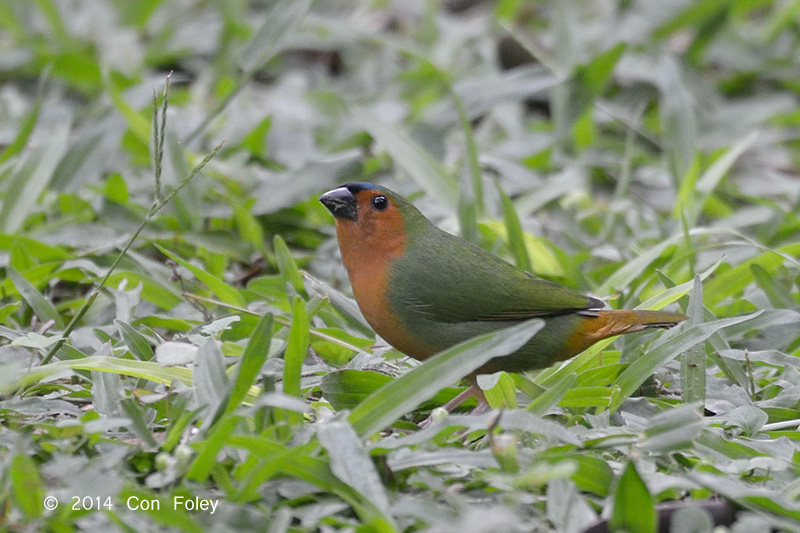Tawny-breasted Parrotfinch
Bamboo Papageiamadine
The bamboo Papageiamadine ( Erythrura hyperythra ), also called Bergpapageiamadine or Grünschwänzige Papageiamadine, is a species in the family of finches. We distinguish several subspecies. It belongs to the species occasionally held as pet birds.
Description
The bamboo Papageiamadine reaches a body length of up to eleven centimeters. It weighs 14 grams on average. In the males, the upper head, neck, back, wing -coverts and tail feathers of the body top are moss green. The forehead is, however, black and turquoise blue. The throat, cheeks, chest, abdomen, and the two tail-coverts are brown ocher. The eyes are large and dark brown in color. The feet are pale flesh-colored. The beak is black. The females differ from the males by a low level of development and brownish instead of black headband. The blue of the front vertex is matt and of lesser extent than in the male.
Juveniles are much duller than the adult birds. You lack the blue on the forehead and the beak is yellow with a black tip.
Dissemination and lifestyle
The distribution of bamboo Papageiamadine are the Highlands of Malaysia, Java, Borneo, Sulawesi, the northern Philippines island of Luzon, Mindoro and the Lesser Sunda islands of Lombok, Sumbawa and Flores. Their habitat are bamboo stocks and the edge of the rainforest. They live in pairs or in small groups. You will usually still at higher elevations before and reached a height Java dissemination of more than 2,000 meters above sea level. On Sulawesi it is even observed at altitudes of 3,500 meters. It feeds on bamboo and grass seeds, green parts of plants and berries.
About the breeding behavior and reproduction are from field observations no reports. After the nest finds it breeds in Flores in May and June and so in the dry season. The nest of bamboo Papageiamadinen consists of three to six eggs. They are 14 days alternately incubated by both parents birds. The young leave the nest after fledging period 23-26 days. They are cared for another two weeks from the parents birds.
Attitude
Ersthalter in Germany was the Berlin Zoological Garden in the 1930s. After this first introduction they lacked for decades in the bird trade, and came back to Europe until 1965. It is now followed suit in small numbers, but remain captive breeding over several generations been an exception.









